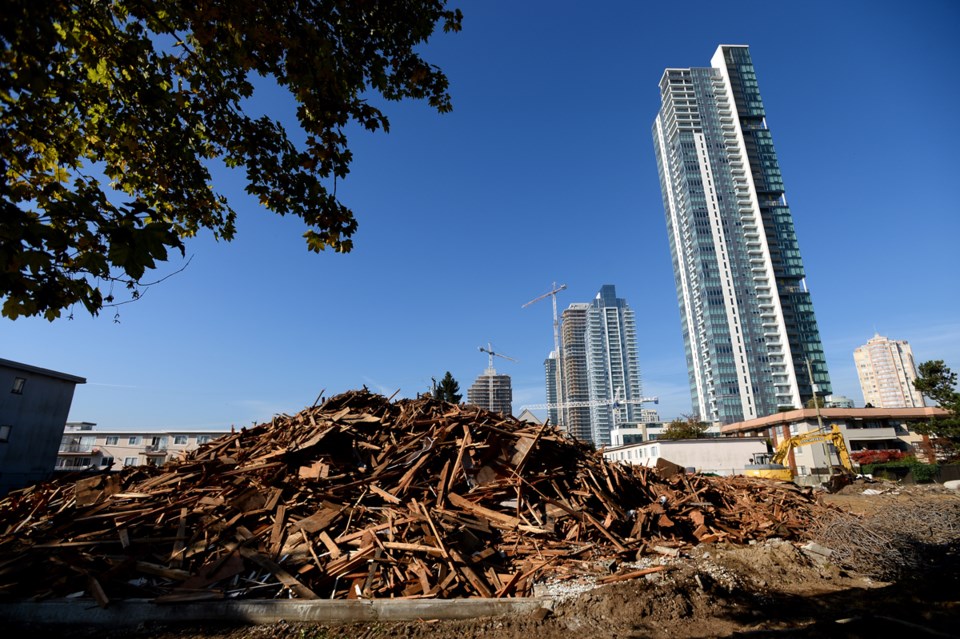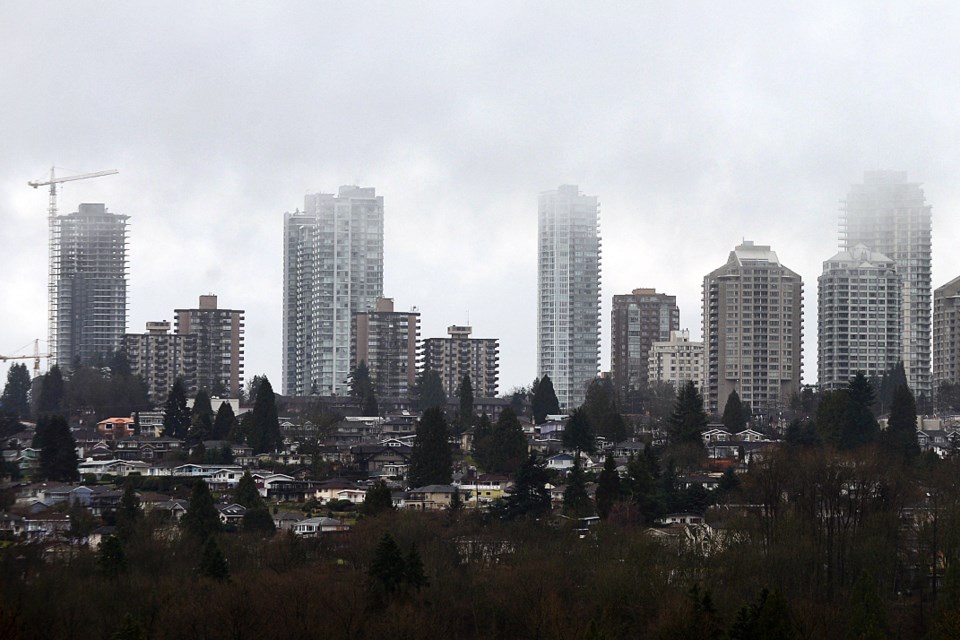Burnaby has done the right thing in the wrong place, according to data analyst Jens von Bergmann.Â
The city has built desperately needed housing along its rapid transit network at a furious pace – but concentrating much of that development in Metrotown has displaced vulnerable renters unnecessarily, he told the NOW.Â
Metro Â鶹´«Ă˝Ół»is hemmed in by ocean, rivers and mountains, with much of its land already taken up by industrial, residential and commercial uses. This means something – or someone – will have to be displaced to make way for most new developments, he explains.
The question for planners and politicians becomes where to concentrate new density.
“The choice of where is really at the core of all the issues that we’re having,” von Bergmann said.Â
Mapping renter densityÂ
Von Bergmann recently teamed up with transportation planner Denis Agar to “quantify how one could plan for displacement on a regional level.”
They looked at the within TransLink’s rapid transit network. Metrotown was one the of densest neighbourhoods in the whole region, with 20 to 40 renters per acre.Â
Burnaby’s Metrotown Downtown plan, enacted in 2017, designated the area for mass redevelopment. This led to the displacement of hundreds of renters evicted by developers who then demolished their three- and four-storey rental apartment buildings to make way for new condo towers. The process, pejoratively known as demoviction, was a leading issue in the election that saw longtime Mayor Derek Corrigan ousted from office last year. Â
There’s a better way to build housing without displacing vulnerable people – and one doesn’t need to look far to find it, von Bergmann said.Â
Von Bergmann and Agar’s interactive map shows a steep drop-off from one side of Imperial Street to the other: 40 renters per acre to the north, where low-rise apartment buildings fill every block, and three renters per acre to the south, where single-family homes dominate.Â
That low-renter-density area is where we should be building, von Bergmann said.
Owners less vulnerable than renters
Homeowners are not as vulnerable to displacement as renters, he said. If their neighbourhood is designated for future densification, they can choose to sell to a developer – often at a handsome profit – or they can choose to stay. Renters don’t have that choice.
It’s a matter of asking “where, overall, we can minimize undesirable impacts,” von Bergmann said.
But he acknowledged such a proposal can be a tough sell. Many Canadians see single-family homes as the ideal place to live and raise a family and want to protect them from redevelopment.Â
Von Bergmann grew up in a row house in Bonn, Germany where there was “no such thing as single-family zoning.” So, he said, he doesn’t quite understand the attachment many North Americans have to the ideal of a detached home.
Vancouver's Olympic Village provides a template for densification done right, he said. A mix of housing types have been built, surrounded by parks, cafes, stores and other amenities, making for what von Bergmann described as a “very attractive area” that “works really well.”

Single-family densification on the table: mayor
Mike Hurley, who was elected as mayor of Burnaby on a promise to make housing more affordable, said his new housing task force will seriously consider densifying single-family areas near SkyTrain routes.Â
“I think the public is starting to get their head around that there is going to have to be more densification throughout the city,” he said.
Densification doesn’t necessarily mean building highrises in the place of bungalows, he said. These areas are probably better suited for “missing middle” housing such as row-houses, according to Hurley.
The Mayor’s Task Force on Community Housing plans to deliver an interim report in May and a final report in July – both recommending strategies for solving the city’s housing woes.
Beware of unintended consequences: councillor
But one of the architects of Burnaby’s existing housing policies said she was concerned about proposals to densify areas outside the city’s four city centres – Metrotown, Brentwood, Lougheed and Edmonds – where most new development has been focused.Â
Coun. Colleen Jordan said opening up single-family areas to densification could have unintended consequences.
“Then you start to get into sprawl,” she said.Â
Jordan said the Edmonds neighbourhood has a good balance where dense residential developments alongside mixed-use commercial amenities exist within a block of more suburban-looking single-family areas.
The city should be careful before changing course, she said.
“There’s long history and long consequences for some of these decisions,” Jordan said. “You can’t go changing one thing without saying what that means for something over there.”
Jordan, who has served on council since 2002, led much of the city’s planning before the October, 2018 election. She defended the controversial Metrotown Downtown Plan, which she said was necessary to mitigate the impacts of a wave of redevelopment that was going to happen either way.
According to Jordan, owners of Metrotown’s rental apartmentment buildings would still have renovicted – evicting a tenant to renovate their unit and charge a higher rent to a new renter – or demovicted their tenants under the previous zoning.
By designating the area for high-density redevelopment, she said the city was able to control how the area changed – and reap benefits by demanding cash from developers for extra density.
Hurley has removed Jordan from the planning and development committee, which she once chaired, and left her off the new housing task force while appointing four of her council colleagues.Â



